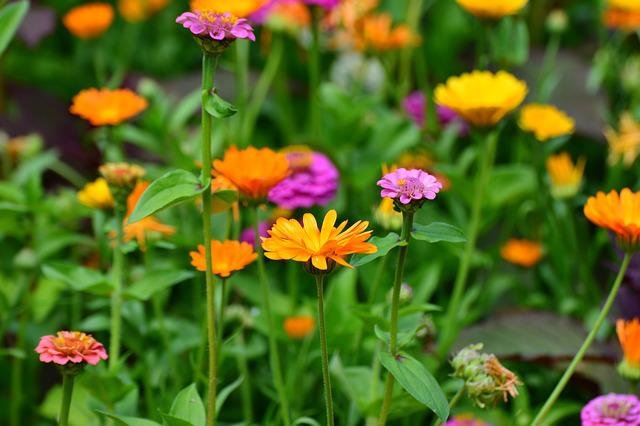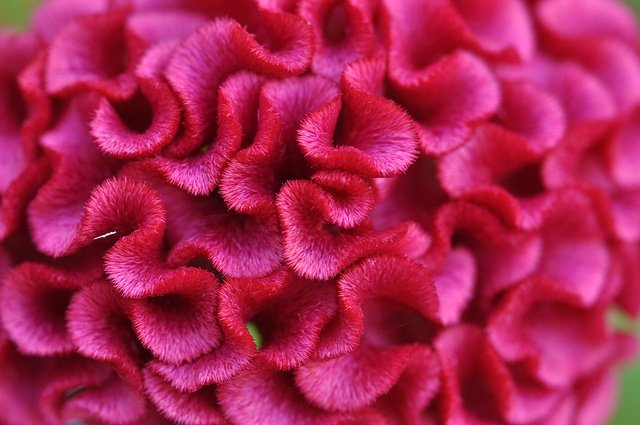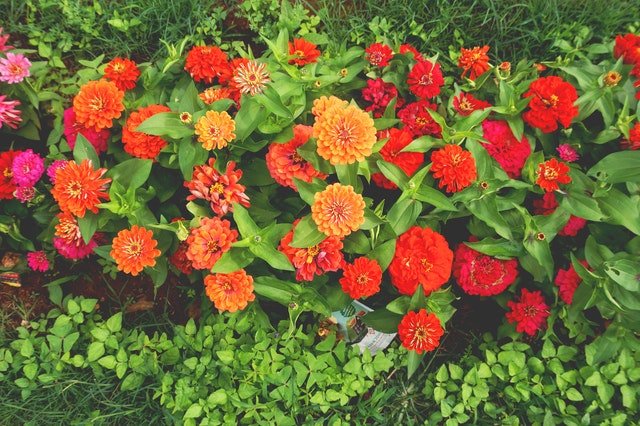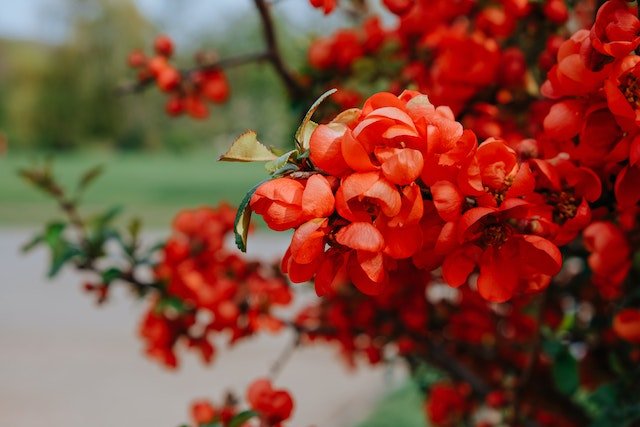Last updated on August 9th, 2023 at 08:53 am
The list of perennial flowers with shallow roots includes Bleeding Heart, Creeping Phlox, Baby’s Breath, Sweet Woodruff, Rock Cress, Dwarf Crested Iris, Basket-of-Gold, Moss Phlox, Blue Fescue, Alyssum, and Silver Mound.
Perennial flowers are a gardener’s dream. Unlike annuals, perennial flowers come back year after year, providing color and beauty to the garden for seasons on end. But what many people don’t know is that perennial flowers can have shallow root systems as well!

In this article, we will discuss the benefits of perennial flowers with shallow roots, and give you a list of some beautiful plants that fit this description.
Table of Contents
What are Perennial flowers?
Perennial flowers are a type of plant that lives for more than two years. This means that, unlike annuals which must be replanted each year, perennial flowers will come back on their own. Perennials can be both herbaceous plants (meaning they have soft stems and leaves) or woody plants (meaning they have hard, woody stems).
Perennial herbaceous plants are usually grown from seed, while perennial woody plants are usually grown from cuttings. Many perennial flowers will bloom for just a few weeks each year, while others will bloom continuously from spring until fall.
Why do some Perennial flowers have shallow roots?
The root system of a plant is responsible for anchoring the plant in the ground, absorbing water and nutrients, and storing food. The size and type of root system a plant has will vary depending on the plant’s needs. For example, perennial flowers that grow in dry climates will often have deep roots in order to reach underground water sources.
Perennial flowers with shallow roots are usually found in areas with high rainfall or frequent watering. This is because these plants do not need to reach deep into the ground in order to find water – the shallow soil is usually enough.
There are many other reasons why a perennial flower might have a shallow root system. In some cases, it is due to the type of soil in which the plant is growing. For example, sandy soils tend to be shallower than clay soils. Additionally, the climate can also play a role. Plants that grow in dry, hot climates are more likely to have shallow roots than those that grow in cooler, moister climates.
What are the benefits of a shallow root system for perennials?
So what are the benefits of perennial flowers with shallow roots? For one, these plants are often drought-resistant. This is because they are able to better access water and nutrients from the soil when their roots are close to the surface.
Additionally, shallow-rooted perennial flowers are often more heat-tolerant than their deep-rooted counterparts. This is because they can better regulate their temperature by drawing in cooler air from the surface of the soil.
Finally, for plant enthusiasts, shallow-rooted flowers are the perfect ones to grow in containers since they do not need as much space to spread their roots. They are also ideal for gardening in small spaces or areas with poor drainage. In addition, perennial flowers can provide a longer life span with gorgeous flowers in the room if they grow indoors.
List of Perennial Flowers with shallow roots:
Now that we’ve discussed the benefits of perennial flowers with shallow roots, let’s take a look at some specific plants that fit this description. Here are just a few of the many perennial flowers that you can grow with shallow roots:
– Bleeding heart (Dicentra spectabilis)

Bleeding Hearts (Dicentra spectabilis) are perennial plants that typically bloom in the spring. They are named for their heart-shaped flowers, which range in color from white to pink. The roots of Bleeding Hearts typically grow to a depth of 12 inches.
However, they are also shallow-rooted plants, so they can be easily damaged by strong winds or heavy rains. For this reason, it is important to plant them in an area that is protected from these elements. Bleeding Hearts are also well suited for planting in pots or containers. In fact, because of their shallow root system, they are often grown in containers indoors.
Bleeding Hearts are not only beautiful plants, but they also have many benefits. For example, they are known to attract bees and other pollinators to the garden. They are also deer resistant and drought tolerant. As a result, they make an excellent addition to any landscape.
– Creeping phlox (Phlox subulata)
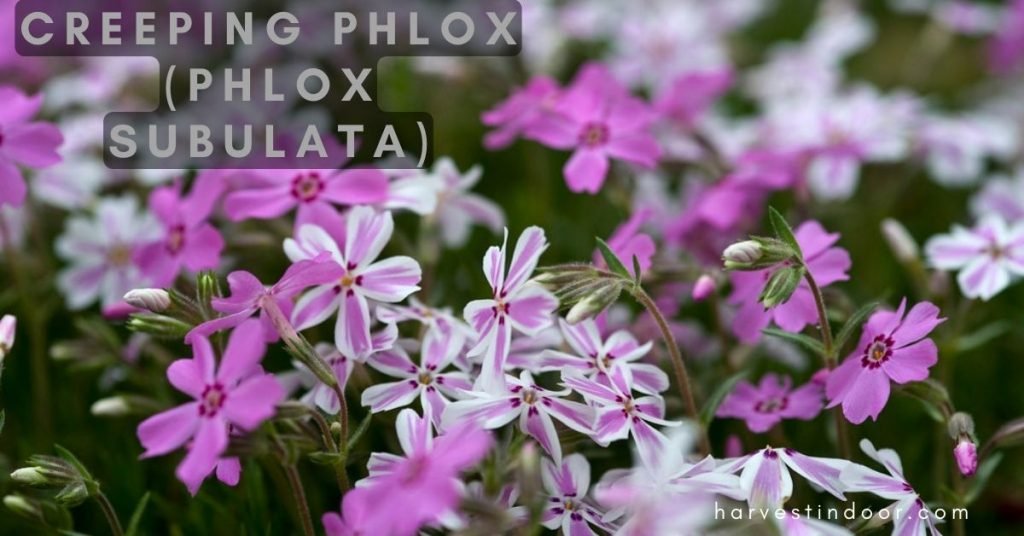
Creeping phlox (Phlox subulata) is a perennial plant that is native to the eastern United States. It is a member of the Polemoniaceae family, which also includes such plants as Jacob’s ladder (Polemonium caeruleum) and false Solomon’s seal (Smilacina racemosa).
Creeping phlox typically grows to a height of 6-12 inches and has blue or purple flowers that bloom in the spring. The roots of creeping phlox typically grow to a depth of 18-24 inches, making it an ideal plant for use as a groundcover.
In addition, creeping phlox is also well-suited for growing in containers, as it does not require a large amount of root space. The dense network of roots also makes it an effective weed barrier. Lastly, Creeping phlox is known for its ability to attract butterflies and hummingbirds. Consequently, it can be a valuable addition to any garden, providing both visual interest and wildlife habitat.
– Baby’s breath (Gypsophila paniculata)
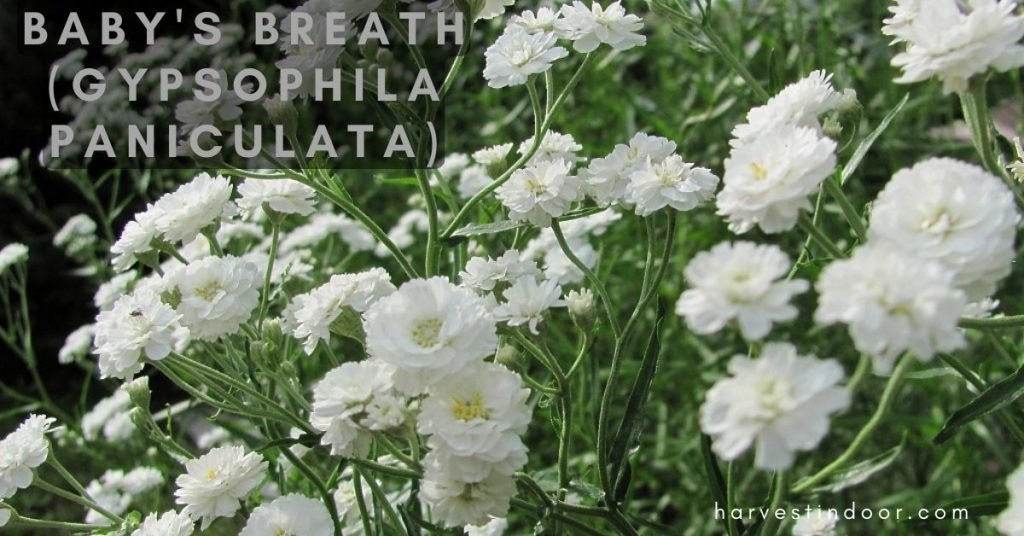
Baby’s breath (Gypsophila paniculata) is a herbaceous perennial plant that typically grows to 30–100 cm (12–39 in) tall. The leaves are opposite, linear to oblong, and 1–3 cm (0.4–1.2 in) long. The flowers are borne in loose corymbs or racemes at the stem tips; each flower is 5–8 mm (0.20–0.31 in) in diameter with four white petals.
The root system is fibrous and shallow. Baby’s breath is tolerant of a wide range of soils and site conditions but prefers full sun and well-drained soils. It is drought-tolerant but does not tolerate wet soils for prolonged periods. In cultivation, it is often propagated by seed or division in spring. It is also sometimes grown as a biennial, with plants flowering in their second year before dying out.
Baby’s breath can be used as a filler flower in bouquets and floral arrangements, as well as being used on its own in dried flower arrangements. It has also been used as an ingredient in potpourri. Baby’s breath is considered by some to be an invasive species in parts of North America, particularly the Great Plains region. However, it is also considered a valuable source of nectar for bees and other pollinating insects.
– Sweet woodruff (Galium odoratum)

Sweet woodruff (Galium odoratum) is a perennial herb in the family Rubiaceae, which also includes coffee and gardenia. The plant is native to Europe and Asia, but it has been introduced to North America, where it is now naturalized.
Sweet woodruff has a creeping habit and grows to about 10-30 cm (4-12 inches) tall. The leaves are arranged in whorls of 6-8, and each leaf is 2-5 cm (0.8-2 inches) long. The flowers are small and white, with 4 petals. They are borne in clusters of 2-5 at the tips of the stems. The fruit is a small, greenish-black drupe.
Sweet woodruff is often grown as an ornamental plant, but it also has some culinary and medicinal uses. The leaves can be used fresh or dried to flavor wine, cordials, and liqueurs. They can also be used to make tea. Sweet woodruff has been used traditionally to treat digestive disorders, headaches, and anxiety. It is also said to promote sleep and induce sweating.
Sweet woodruff can be propagated by seed or division. It prefers partial shade and moist, well-drained soil but will tolerate full sun and clay soils. Plants grown in pots should be repotted annually. Sweet woodruff typically blooms from May to June.
– Rock cress (Arabis caucasica)
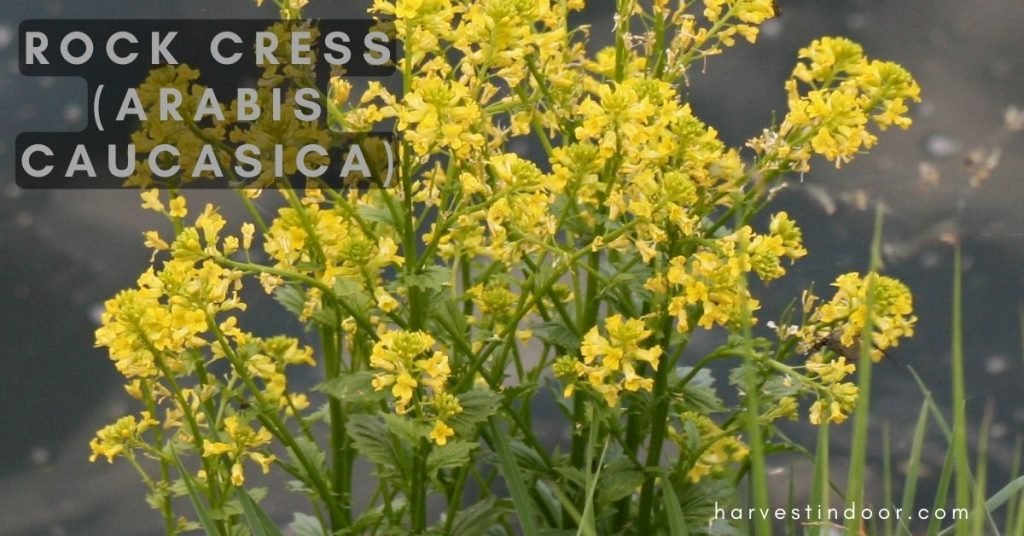
Rock cress (Arabis caucasica) is a beautiful, fast-growing plant that is perfect for adding a splash of color to your garden. These hardy perennials are relatively easy to care for and can tolerate a wide range of growing conditions. Rock cress plants typically reach a height of 12-18 inches and produce an abundance of small, delicate flowers in shades of white, pink, or purple. They are often used as a groundcover or as a border plant in gardens.
Despite their delicate appearance, rock cress plants are quite tough and can even thrive in poor soil conditions. They have a deep taproot system that helps to anchor the plant and prevent it from being uprooted by strong winds. But it doesn’t mean they can’t be grown in containers. When they are growing in a pot, Rockcress tends to have shorter roots and still can produce beautiful flowers. Rock cress is also drought-tolerant and can handle extended periods of dry weather.
In fact, these plants actually prefer drier conditions and will go dormant if they receive too much moisture. Although they are tolerant of a wide range of growing conditions, rock cress plants do not do well in soggy soils. If the soil around your Rock cress plant is constantly wet, it is likely to develop root rot and other fungal diseases.
Rock cress plants are relatively low-maintenance and can be propagated easily from seed or cuttings. They are also resistant to most pests and diseases. However, they can sometimes be affected by powdery mildew, aphids, or slugs. These problems can usually be resolved with basic pest control measures such as hand-picking or spraying with insecticidal soap.
Rock cress plants are generally safe for pets and humans but can cause skin irritation in some people. If you are looking for a beautiful, easy-to-care-for plant to add to your garden, Rockcress is an excellent choice. These versatile perennials can provide color and interest throughout the growing season with very little effort on your part.
– Dwarf Crested Iris (Iris cristata)
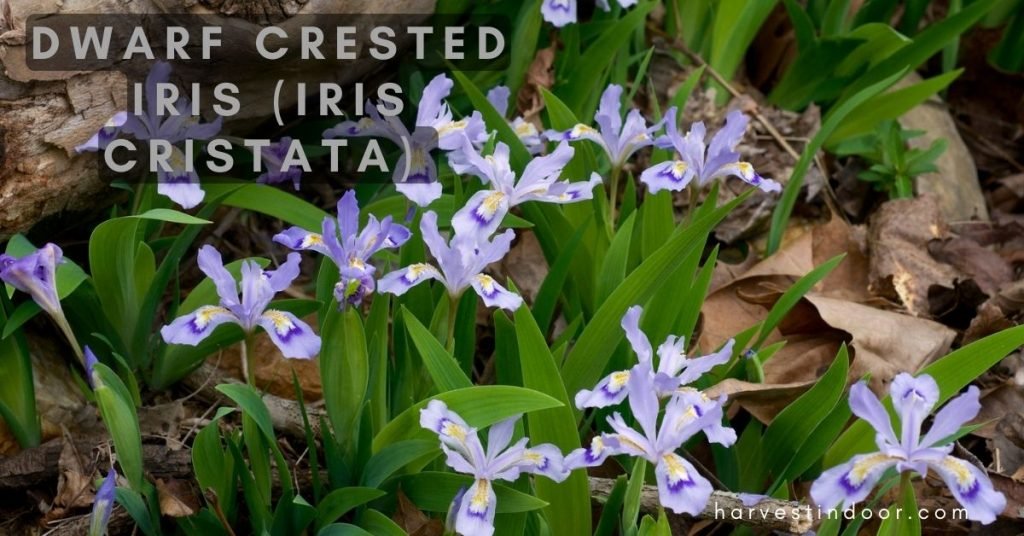
The Dwarf Crested Iris (Iris cristata) is a charming perennial native to Eastern North America. Its vibrant violet-blue flowers, adorned with delicate white and yellow markings, create an enchanting display in spring. Despite its captivating appearance, the Dwarf Crested Iris maintains shallow roots, extending only to about 6-8 inches in depth.
This petite beauty thrives in shaded woodland gardens and rock gardens. Its shallow root system makes it a wonderful choice for planting alongside other woodland plants without competing for root space. The Dwarf Crested Iris is also known to attract beneficial pollinators such as butterflies and native bees.
– Basket-of-Gold (Aurinia saxatilis)

Basket-of-Gold (Aurinia saxatilis), also known as Goldentuft Alyssum, is a brilliant perennial that transforms your garden into a sea of golden hues. This low-growing plant produces an abundance of cheerful yellow flowers that adorn its gray-green foliage. Its shallow root system, extending around 6-10 inches deep, makes it a perfect addition to rock gardens and crevices.
Basket-of-Gold is drought-tolerant and thrives in well-drained, poor soils, making it an excellent choice for challenging garden spaces. Its shallow roots ensure it won’t compete aggressively with other plants for resources, and its vibrant flowers provide a striking contrast to the surrounding landscape.
– Blue Fescue (Festuca glauca)

Blue Fescue (Festuca glauca) is a striking ornamental grass known for its distinctive blue-gray foliage. This perennial grass adds a touch of elegance to gardens and landscapes, providing year-round interest. Despite its visually appealing appearance, the roots of Blue Fescue remain shallow, extending to around 8-12 inches in depth.
Blue Fescue is a drought-tolerant plant that thrives in well-drained soils. Its shallow root system makes it an ideal candidate for rock gardens, borders, and container plantings. Its compact size and low maintenance requirements further enhance its popularity among garden enthusiasts.
– Alyssum (Lobularia maritime)

Alyssum (Lobularia maritima), often referred to as Sweet Alyssum, is a delicate yet fragrant perennial that graces gardens with its charming clusters of tiny flowers. These flowers emit a sweet scent that attracts pollinators, enhancing the overall vitality of your garden. Alyssum’s shallow root system extends to approximately 4-6 inches deep.
This dainty perennial is perfect for edging pathways, spilling over containers, and filling in gaps between other plants. Its shallow roots make it an excellent choice for planting in various garden settings, including hanging baskets and raised beds.
– Silver Mound (Artemisia schmidtiana)

Silver Mound (Artemisia schmidtiana) is a graceful perennial known for its finely textured silver-gray foliage. This compact plant adds a touch of elegance to garden beds and borders, creating a striking contrast with surrounding plants. Despite its compact size, Silver Mound boasts a shallow root system that extends to about 6-8 inches in depth.
Silver Mound is well-suited for rock gardens, container plantings, and landscape borders. Its shallow roots make it a valuable addition when designing garden arrangements, as it won’t encroach upon neighboring plants. The plant’s silvery foliage adds visual interest and can create a soothing backdrop for other vibrant blooms.
Why you should consider growing shallow-rooted perennials flowers?
Perennial flowers with shallow roots are a great choice for gardeners who want low-maintenance plants that are easy to care for. These plants typically have small root systems that make them more drought-tolerant and less likely to be uprooted by strong winds. They also tend to be less susceptible to problems with pests and diseases. And because they have shallow roots, they are often easier to grow in containers than plants with deep taproots.
Whether you’re looking for a drought-tolerant plant for your garden or a perennial flower to grow in a container, any of the plants on this list would make a great choice. So next time you’re at the nursery, be sure to look for perennial flowers with shallow roots!

Gardening is my passion and growing plants indoors has always been a stress relief for me. Grow a banana tree in my apartment once (although failed to produce bananas).


